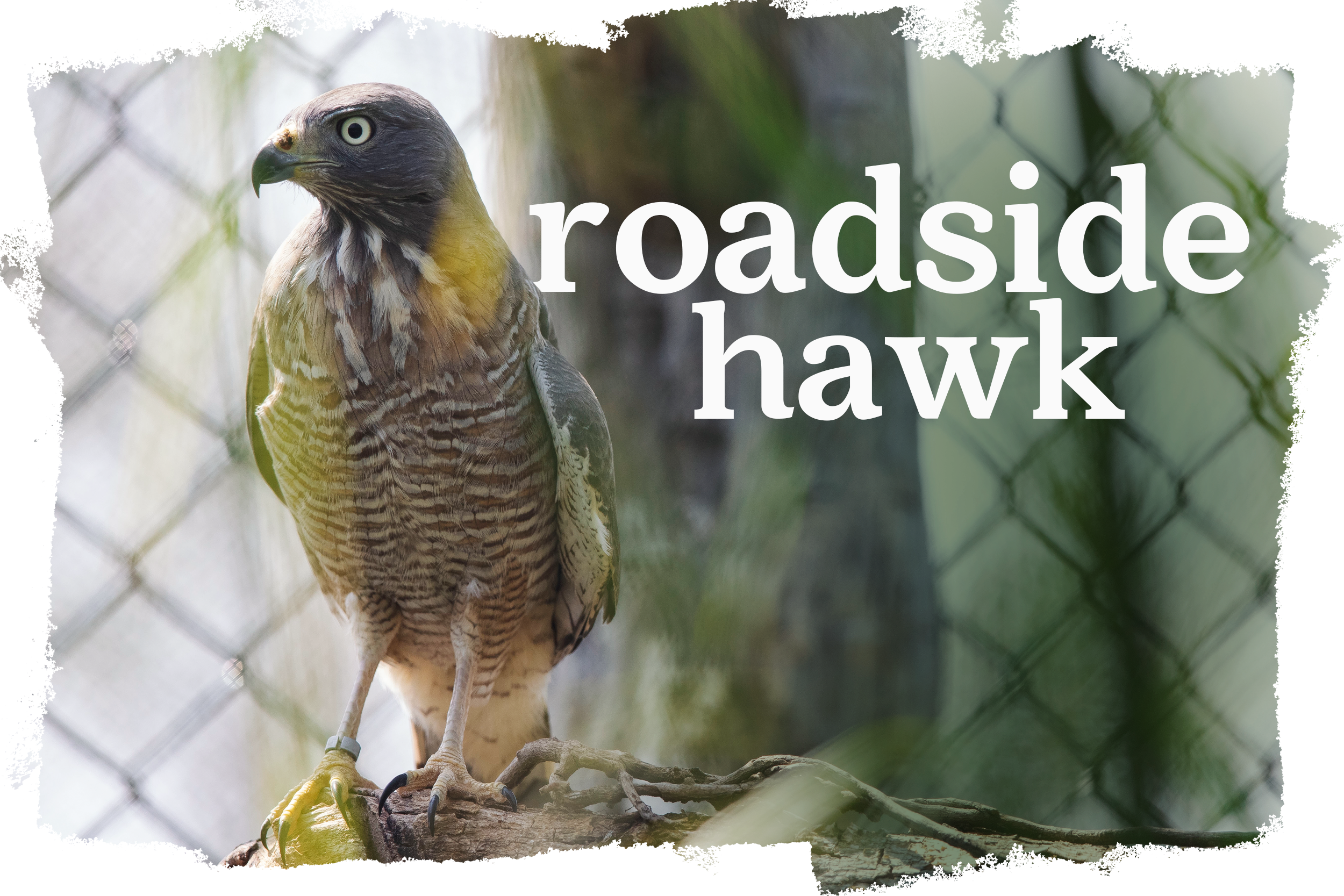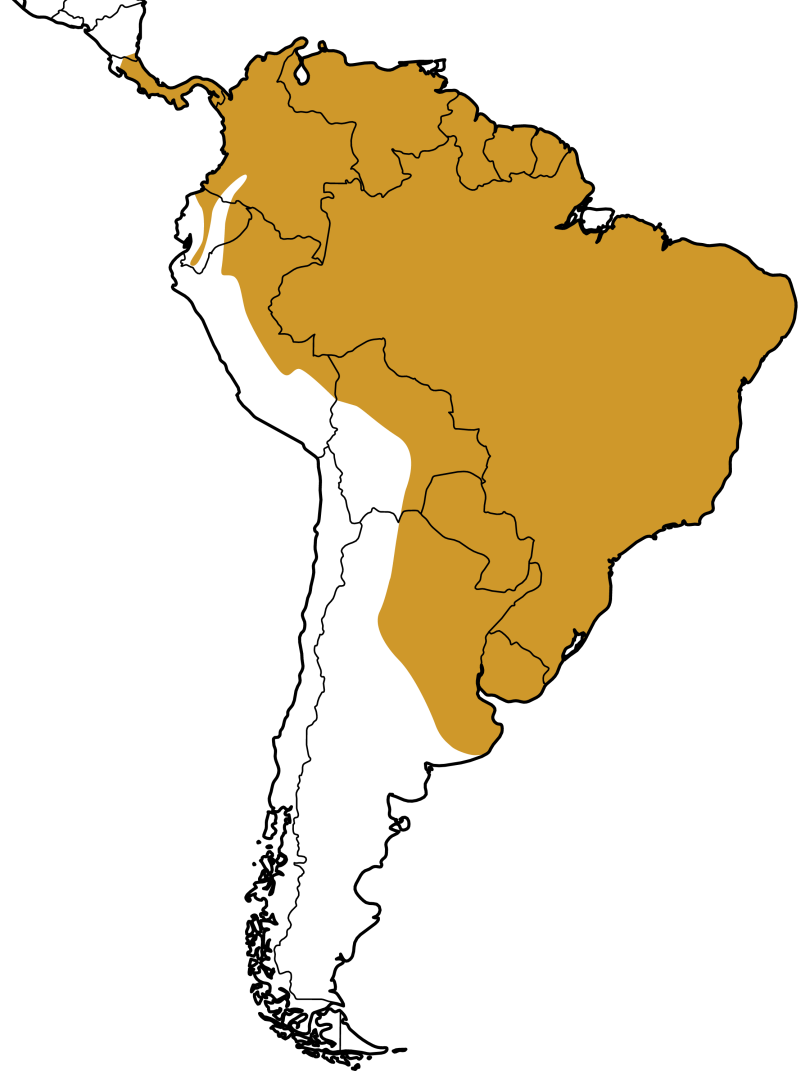

It is the predominant hawk species in Brazil, found all over the country. Like every bird of prey, it has an indispensable role in ecological balance, as it acts as a controller of rodents, such as rats, and small birds, such as pigeons, in urban centers, preventing overpopulation.
206g to 350g
31cm to 41cm
Important data
MAIN FEATURES
It has a black beak tip and yellowish base. The head and top of the wings are gray. The chest is rust-colored and features wide vertical lines. It has two black stripes clearly visible at the tip of the tail.
TOP THREATS
Getting runover and sport hunting.
DIET
It feeds on small birds, lizards, snakes, moths, beetles, locusts, bats, rats, spiders and small mammals.REPRODUCTION
Roadside hawks live in pairs and build their nests on top of trees. Females lay up to two eggs, which are incubated for approximately 30 days. While the female takes care of the eggs, the male feeds her and watches the nest.BEHAVIOR
● Inhabits various ecosystems, including urban environments.
● In the breeding period can become aggressive and attack other species that approach their
TRIVIA
The threat of an intruder makes them aggressive and they scare them away with low flights and scary screams.
Geographical distribution





